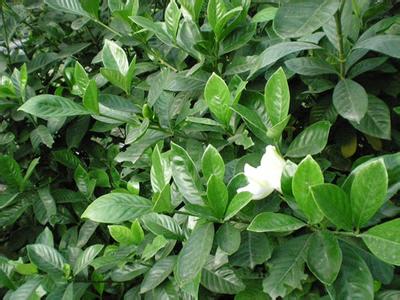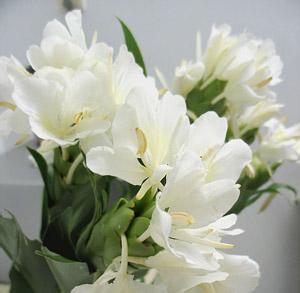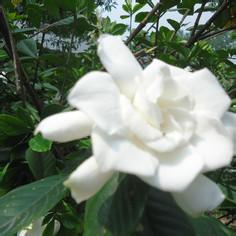How to cultivate branches and flowers? key points of branch flower culture
The branch flower is actually the gardenia as we know it, which is called the branch flower in the local dialect. The branch flower is white and beautiful, and many people like it, so how to raise the branch flower? Let's take a look.

Branch flower culture: soil
Gardenia is a typical acidic flower, and the local soil and water of many flower friends in the north are alkaline, so special attention should be paid to breeding. It is best not to use pastoral soil. You can mix your own soil with 40% garden soil, 15% coarse sand, 30% stable manure soil, 15% rotten leaf soil, or use special nutrient soil.
Branch flower culture: watering
Branch flowers are typical acidic flowers, so direct watering of tap water does not help to improve soil acidity and alkalinity. Rain Water or fermented rice washing water can be used for watering. If it is tap water, it should be hung for 2 to 3 days before use. Watering 0.2% ferrous sulfate (black alum) water or applying alum fertilizer water every 7 to 10 days during the growing period can not only prevent soil alkalinization, but also supplement iron in the soil, which can not only prevent leaves from yellowing, but also make leaves greenish and bright, flowers hypertrophy.

Branch Flower Culture: environment
Gardenia likes cool and wet (the humidity here is not desperately watered, on the contrary, gardenia is afraid of stagnant water) explain in detail: gardenia must avoid scorching sun exposure, but often some people mistakenly think that gardenia requires full shade, resulting in mistakes in cultivation. In fact, while paying attention to cultivating its cool environment, it is necessary to maintain 60% light throughout the day in order to meet the needs of its growth. Like dampness: if the air humidity is less than 70%, it will directly affect the flower bud differentiation and bud growth of Gardenia jasminoides, but too wet will cause root rot, branch withering and leaf yellow shedding. In addition to normal watering, foliar and nearby ground should be sprayed with clean water frequently to increase air humidity appropriately.

Branch flower culture: fertilization
Gardenia should apply fermented bean cake, sesame sauce dregs, peanut bran and other fertilizers, which can be acidic after fermentation, but must be applied with thin fertilizer, avoid thick fertilizer and raw fertilizer, and do not apply fertilizer during hibernation. If you have been planting for less than three years, do not give human faeces and urine. Too much nitrogen fertilizer will result in thick branches, large leaves, thick green, but no flowering. Lack of phosphorus and potassium fertilizer will also appear the phenomenon of non-flowering or bud withering and shedding.
After reading the key points of branch flower culture introduced above, you should have learned it. Hurry up and start. I wish you a white and beautiful branch flower.
Related
- Wuhan Hospital Iron Tree Blooming Result Was Instantly Frightened by the Gardener Master
- Which variety of camellia is the most fragrant and best? Which one do you like best?
- What is the small blue coat, the breeding methods and matters needing attention of the succulent plant
- Dormancy time and maintenance management of succulent plants during dormancy
- Minas succulent how to raise, Minas succulent plant pictures
- What are the varieties of winter succulent plants
- How to raise succulent plants in twelve rolls? let's take a look at some experience of breeding twelve rolls.
- Attention should be paid to water control for succulent plants during dormant period (winter and summer)
- Watering experience of twelve rolls of succulent plants
- Techniques for fertilizing succulent plants. An article will let you know how to fertilize succulent plants.



